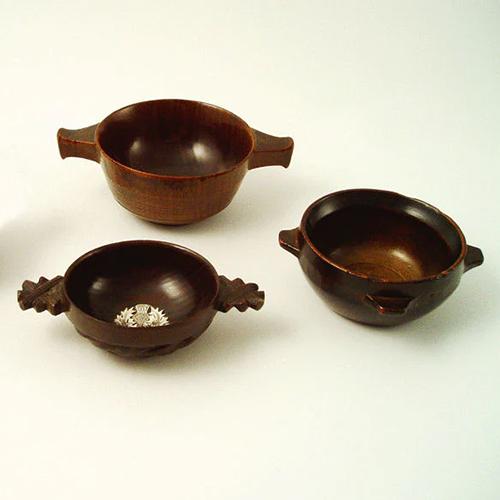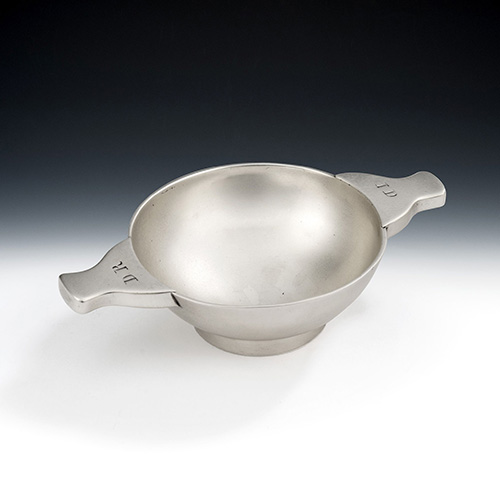

This Thursday is Burns night when we celebrate the life of Scotland’s finest poet, Robert Burns. In honour of the legendary poet our subject this week is a staple part of any traditional Scottish celebration, the quaich.
Derived from the Gaelic word cuach, meaning a cup, a quaich is a shallow two handled drinking vessel, traditionally used for whisky or brandy. Given its Gaelic origins, it is hardly surprising that the first known use of the quaich was amongst the clans that inhabited the Highlands and Islands to the far north and west of Scotland.
The bowl would be used as a sign of friendship and trust, to offer a toast between two clans and their respective chieftains. The twin handled design was also an important symbol of trust, after all, you can’t pull a knife on someone while both hands are holding a cup.
The history of the quaich is a subject of much conjecture amongst scholars. One theory is that the cups were used in ancient ceremonies by the Celtic Druids, another that the quaich’s unusual design stems from Highlanders’ use of scallop shells as drinking vessels.
Arguably the most plausible theory is that the tradition stems from the Viking explorers who settled in Orkney, Shetland and the Hebridean islands between the 9th and 12th centuries, as similar ceremonial bowls are common throughout Scandinavian folklore.
 Traditional quaichs are made from wood and hand carved, or lathe-turned, from a single piece of wood, although it is possible to find antique examples in stone, pewter and horn.
Traditional quaichs are made from wood and hand carved, or lathe-turned, from a single piece of wood, although it is possible to find antique examples in stone, pewter and horn.
Towards the end of the 17th century, the drinking vessels became popular in the lowlands of Scotland. Silversmiths in Edinburgh and Glasgow began offering wooden quaichs with silver mounts, before producing the bowls entirely from silver for wealthier clientele.
Today, quaichs are often used for sporting trophies, and are also a common feature at Scottish wedding ceremonies and christenings. So, when you tuck into your haggis on Thursday, what better way to toast the “Great chieftain o' the puddin-race” than by raising a quaich.
Click here to view examples of quaichs currently available from BADA members.

